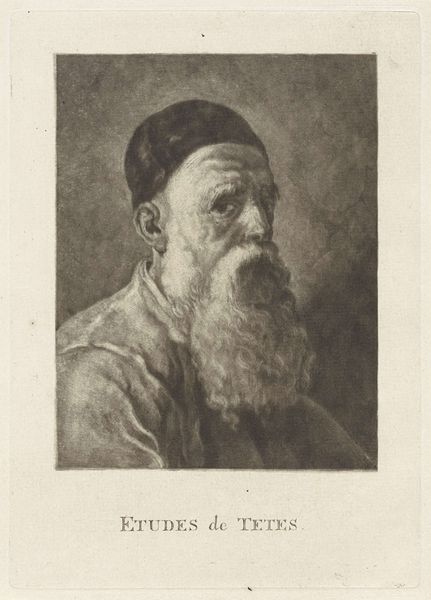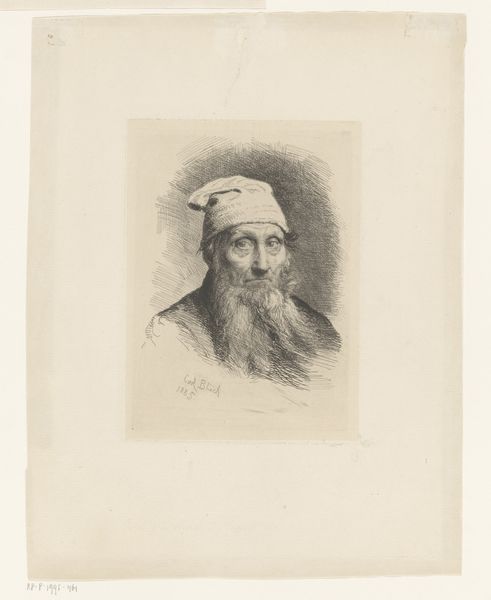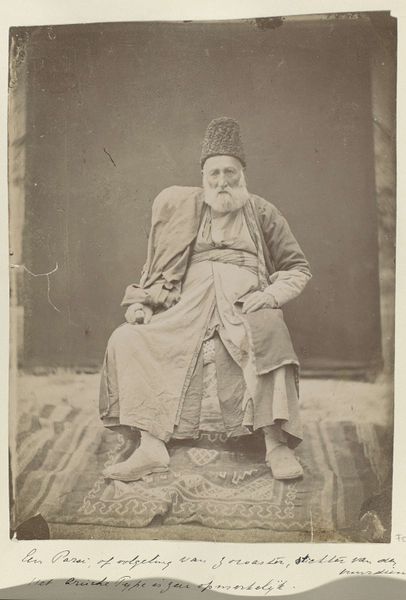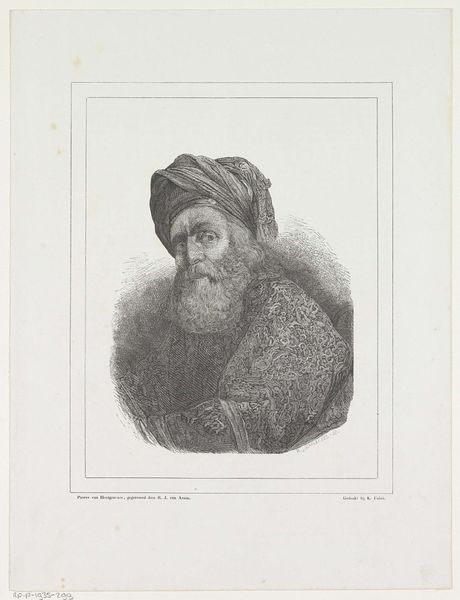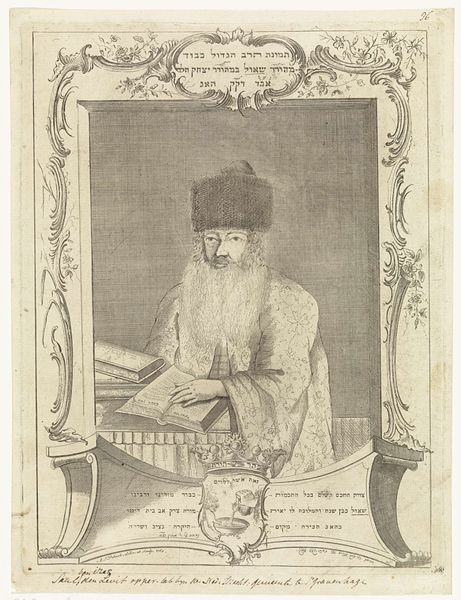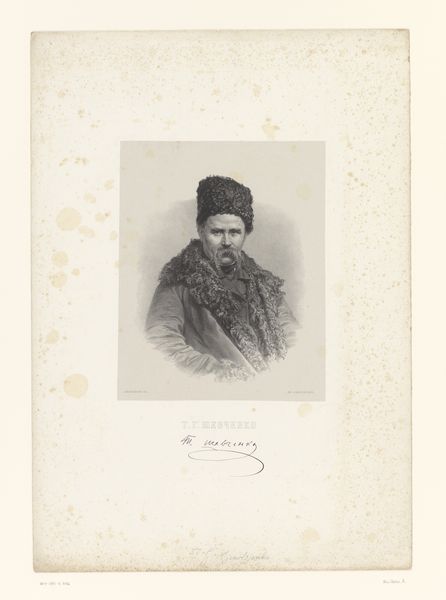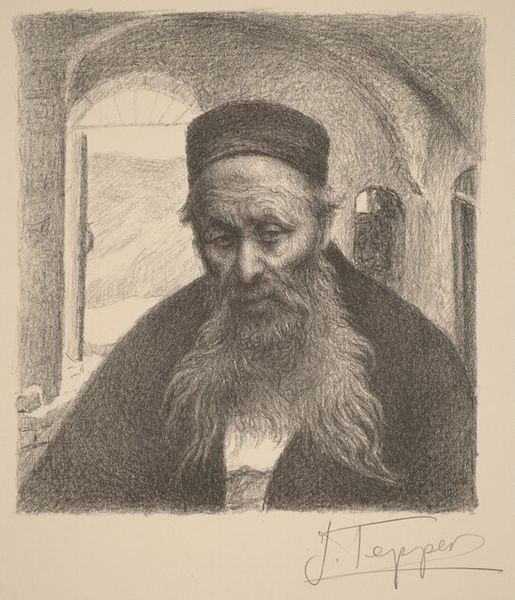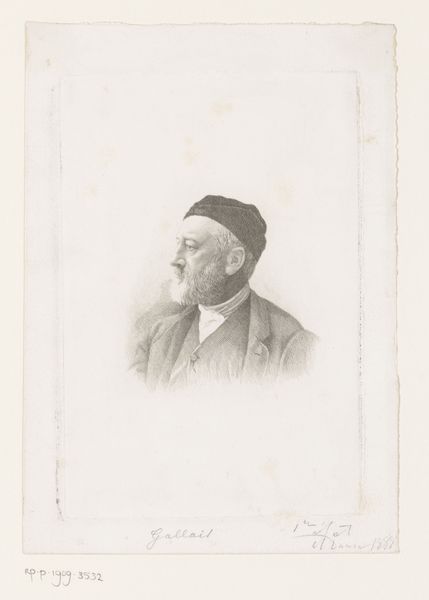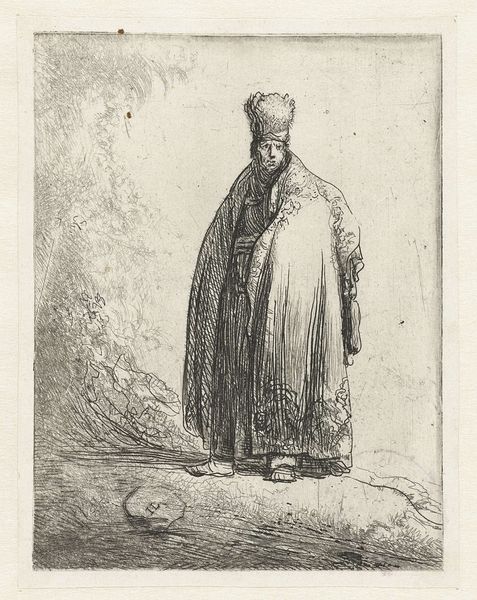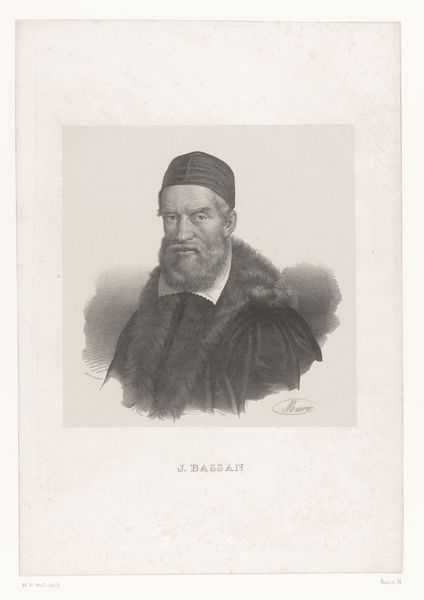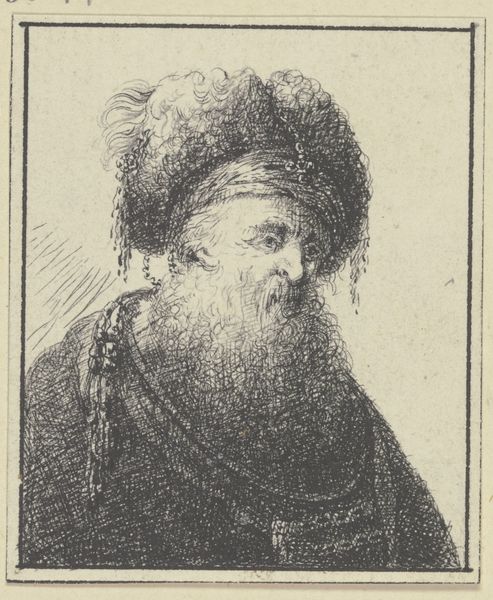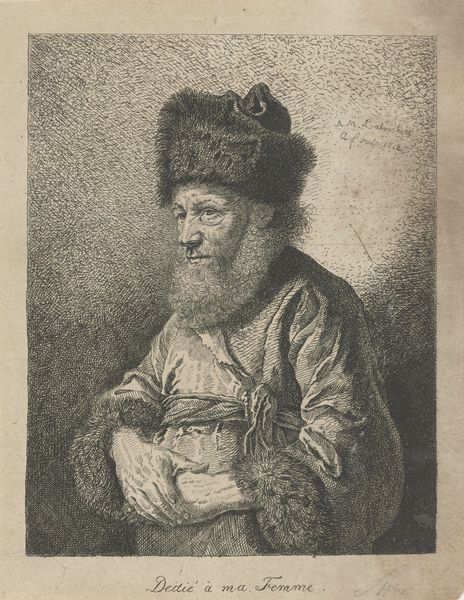
Copyright: Public domain
Curator: Here we have Taras Shevchenko's "Self-Portrait with Beard," created in 1860. It's a print, specifically an etching. What's your immediate impression? Editor: Stark. Melancholy even. There's a softness in the rendering, but the figure is powerfully present, looking directly out. The etching medium itself seems almost industrial, contrasting with the sensitive portrayal. Curator: Absolutely. Considering its time, the print medium makes it more accessible to a wider audience, fitting Shevchenko's role as a public figure and national poet in Ukraine. This wasn't a painting for a wealthy patron, but reproducible art for the masses. Editor: Exactly. And the materiality of etching, the biting of acid into the metal plate, speaks to a kind of labor, an engagement with the process of image-making that mass-produced art often obscures. Curator: And we must consider the political context! Shevchenko, a former serf himself, had been politically repressed by the Tsarist regime and forbidden from creating art. The creation of this self-portrait becomes a defiant act of self-representation, a claiming of agency through artistic labor. Editor: I find it intriguing that he chose the self-portrait. The close-up view, emphasized by the framing, makes it intimate, but its reproduction allowed it to circulate, transforming the personal into a symbol. How do you read the specific fashion depicted, the fur hat, the coat? Is that just a product of its time? Curator: In terms of social history, his attire reflects his status as an intellectual and artist within the context of the Ukrainian national revival. Yet, there is also a conscious connection with his cultural heritage. Consider how it relates to romanticism, but as something different. It represents national identity and agency, as opposed to Romantic landscapes and grand mythological tales. Editor: So the etching isn't just an aesthetic choice or an act of defiance, but also a crucial means for circulating and democratizing the portrait itself. And how we interpret his expression contributes to an overall vision of the artist during a turbulent period. Thank you for that crucial historical context. Curator: Of course. I appreciate you shining light on how its means of production speaks to social purpose. It has been such a fascinating dialogue, hasn't it?
Comments
No comments
Be the first to comment and join the conversation on the ultimate creative platform.
